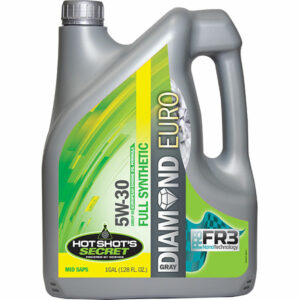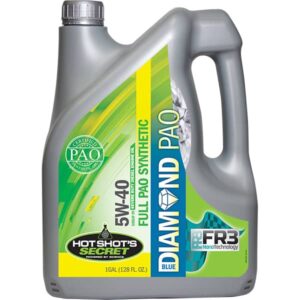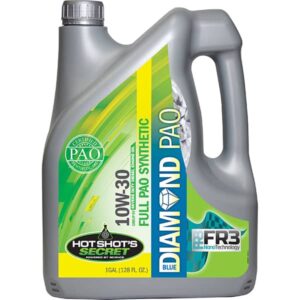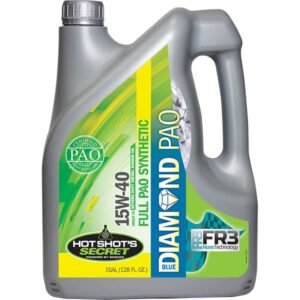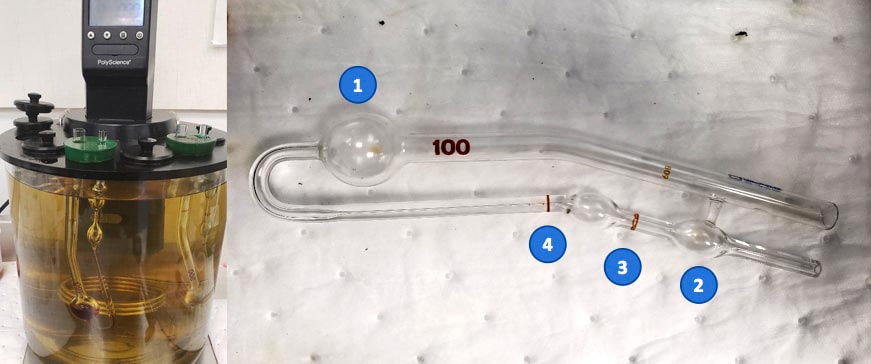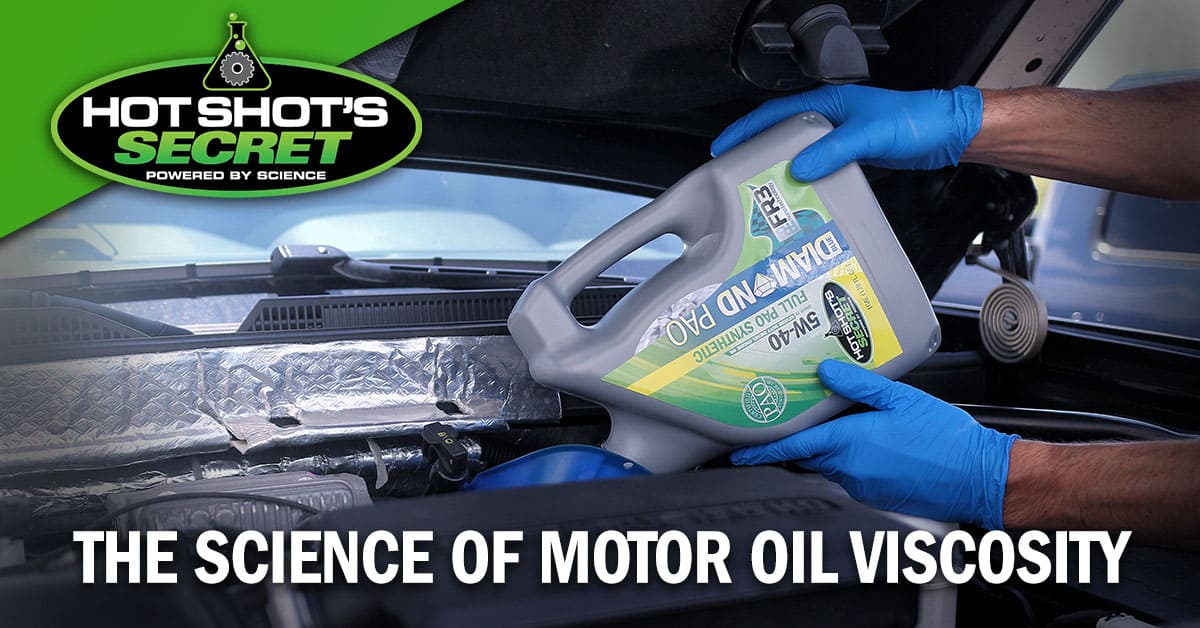
Choosing the right oil for your motor can be overwhelming when you consider the many options available. On top of that, understanding what you are buying when you grab that 15W-40 bottle off the shelf is an entirely different battle. Hot Shot’s Secret can help you learn how to choose the right oil viscosity for your engine.
What Is Viscosity?
Viscosity is the consistency of a liquid before and after internal friction is applied. Specifically, motor oil will thin out as the temperature increases and thicken as it cools. This behavior contributes to the oil’s ability to flow through the engine.
Thinner oil has a lower viscosity, similar to water, pouring more effectively and allowing the engine to start much faster in colder weather. High-viscosity oil is more robust and thick — like honey or molasses — making it ideal for industrial, heavy-duty machinery which operates at higher temperatures.
The Importance of Oil Viscosity
Oil viscosity will impact how vehicles, equipment and other machines perform. Oil separates two metal surfaces and allows them to glide against each other rather than grinding and wearing down the material. Choosing the right viscosity for your application will:
- Reduce friction
- Provide better lubrication
- Lessen particle contamination sensitivity
- Enhance the lubricant life expectancy
- Consume less fuel
- Increase oil fluidity
- Maintain operation in extreme temperatures
Dynamic vs. Kinematic Oil Viscosity
Dynamic and kinematic oil viscosities are necessary measurements when considering which lubrication products are best for your engine.
Dynamic — or absolute — viscosity is the measure of a lubricant’s resistance to flow and its ability to behave under high pressure. To put this concept in perspective, imagine walking through water vs. molasses. You require less energy to glide through water than trudging through molasses. This difference occurs because water has a lower dynamic viscosity.
Kinematic viscosity measures oil’s resistance to flow due to gravity. Every liquid will have a rate at which it moves, though each behaves differently under gravity due to its viscosity. For example, water poured into a glass will flow much faster than molasses, which is more dense.
Viscosity Index
A fluid like oil has many ingredients and quality factors that can affect its viscosity, especially at changing temperatures. Every type of oil has a unique formula that changes how it behaves. To account for those differences, we can calculate the change in oil viscosity from temperature fluctuations to find the viscosity index.
The viscosity index does not use units — instead, it is only measured by temperature change. A fluid is tested at 100 and 212 degrees Fahrenheit. If the oil’s viscosity doesn’t change significantly between the two testing temperatures, it has a high viscosity index — meaning the viscosity does not fluctuate with temperature change. A lower viscosity index indicates that the oil’s viscosity can be significantly affected by temperature change.
The Oil Viscosity Rating System
Motor oils use a rating system developed by the Society of Automotive Engineers (SAE) to classify oil by viscosity. There are a few different ways to categorize motor oils. Straight-weight oils have a set viscosity, a single grade. These oils are uncommon in modern vehicles, but some small engines and older model vehicles will sometimes recommend a straight-weight oil. Straight-weight oil will be named something like SAE30, for example.
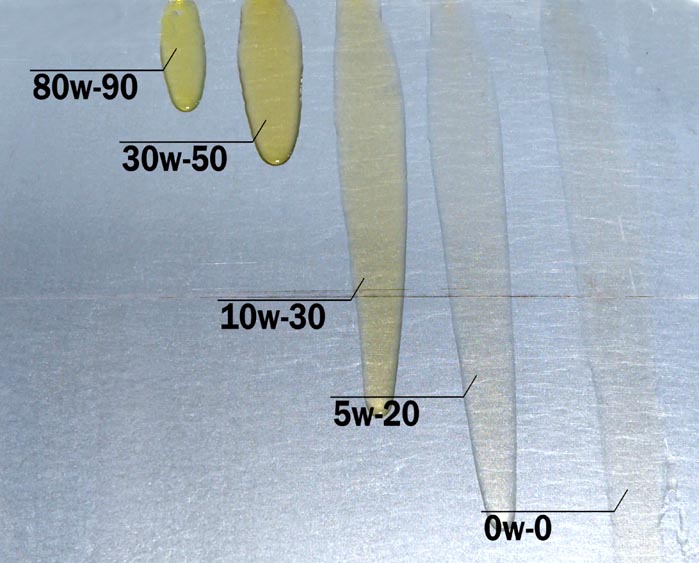
This photo demonstrates how oil behaves at verifying viscosities. The lower the weight, the quicker it spreads out on this angled table.
Aside from straight-weight oils, there are also multi-grade oils. This is the most common type of oil used in modern automotive engines. This means that the oil flows differently at various temperatures. Let’s break this down further.
The first number in the series represents the cold weather viscosity. The oil’s viscosity determines how easily oil pours at a specified temperature. Thin oils have a lower viscosity and pour more easily at low temperatures than thicker oils with a higher viscosity. The ‘W’ stands for “Winter,” so it’s easy to remember the first part of a multi-grade oil’s name is in reference to cold weather viscosity. The second number represents the viscosity at operating temperature.
For example, a 15W-40 oil has a viscosity grade of 15 at 0 degrees Fahrenheit and 40 at an operating temperature of 212 degrees Fahrenheit. Remember, the higher the number, the thicker the oil. So, a 15W-40 oil will have a slower flow rate than a 10W-30.
Testing Equipment
The dominant procedure for performing viscosity measurements is an ASTM D445 — or centistoke — test. The sample is placed in a heated bath at a set temperature (40°C or 100°C). After allowing the test material to equalize to the test temperature, the viscosity can be measured. A capillary tube is used to measure viscosity. After the test material comes to the test temperature, the oil is drawn above the start mark. The oil is then timed on how long it drains to the stop mark. This time is used in a formula to determine the viscosity.
-
Warming area for test fluid
-
Testing holding area
-
Start mark
-
Stop mark
Follow the Manufacturer’s Recommendation
It is always best to follow the manufacturer’s recommendation for the weight and whether to use a multi-grade or straight-weight oil in your motor. The recommendation is based on both ambient temperatures and operating conditions. Failing to follow these recommendations could cause lasting damage to the engine, decreasing efficiencies and voiding any warranties you may have. Using an oil that is too thick will require the motor to “work harder” to move that oil throughout the system, causing a decrease in efficiency. Using an oil that is too thin can lead to a drop in oil pressure and ultimately cause excessive wear and other problems that are easily avoidable.
Contact Hot Shot’s Secret for More Information
Hot Shot’s Secret offers multiple grades and viscosity of oils for a wide array of applications. Green Diamond Fleet Diesel Engine Oil is a synthetic Group III base oil in our full synthetic oil and a Group II/III blend in our semi-synthetic oil, used in most common diesel applications. Blue Diamond PAO Engine Oil is a poly-alpha-olefin (PAO) Group IV synthetic oil requiring minimal viscosity improvers to meet the weight specifications. The infusion of our patented FR3 Nano-Technology and CK-4 additive package provides unsurpassed longevity and performance while keeping the oil cleaner longer and providing better mileage and horsepower. It contains high detergency, exceptional oxidation and thermal stability that prevents deposit formation and oil breakdown. Gray Diamond Euro Engine Oil is a premium full synthetic, mid-SAPS engine oil engineered to provide superior performance and protection for gasoline and diesel European vehicles.
Moving away from traditional oil applications, the Black Diamond Outlaw PAO Diesel Engine Oil is formulated to provide extreme wear protection for off-road and street/strip applications and is specifically developed for non-DPF applications. Non-DPF applications allow a much higher level of zinc in the oil, resulting in up to 3x the amount of wear protection. Infused with our patented FR3 Nano Technology, this oil provides the absolute best level of protection to your diesel engine and an incredible 14 TBN additive package. The Adrenaline R-Series Racing Oil was formulated for the most demanding applications in racing, with a wide range of weights available.
Like all Hot Shot’s Secret products, you can rest assured knowing that your purchase comes with our money-back guarantee. If you have questions about our engine oil, feel free to contact our team for more information. When you’re ready to buy, choose a size and add it to your cart, or call 800-341-6516 for information about bulk-quantity discounts.

